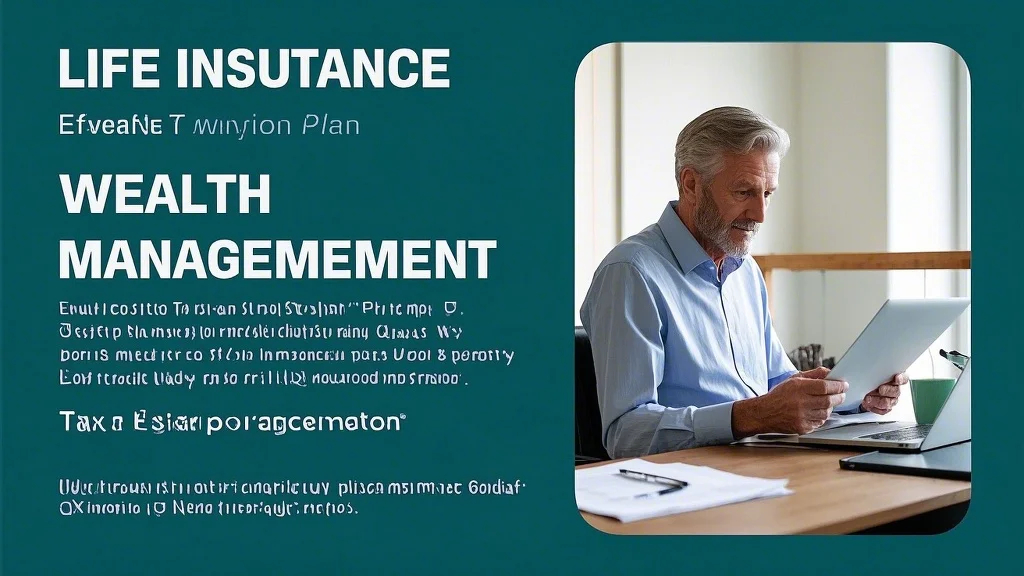Strategic Life Insurance Wealth Management Approaches
Incorporating life insurance wealth management into your financial plan requires understanding its multifaceted role beyond basic death benefit protection. High-net-worth individuals utilize permanent life insurance policies as versatile financial instruments that can provide tax-advantaged growth, supplemental retirement income, and liquidity for estate taxes. The cash value accumulation in whole life or indexed universal life policies grows tax-deferred and can be accessed through policy loans without triggering taxable events, creating a unique wealth-building vehicle. Sophisticated strategies often involve overfunding these policies within IRS guidelines to maximize cash value growth while maintaining the death benefit. For business owners, life insurance plays critical roles in buy-sell agreements and key person protection, ensuring business continuity while creating financial safeguards for surviving stakeholders.
What distinguishes elite life insurance wealth management is the coordination between policy design and overall financial objectives. The most effective approaches match policy type and structure to specific needs – whether that’s wealth replacement for anticipated estate taxes, legacy planning for heirs, or creating a tax-efficient income stream in retirement. Another critical consideration is policy ownership structure, as improperly owned life insurance can accidentally increase estate tax liabilities rather than mitigate them. Regular policy reviews (at least biennially) ensure coverage amounts remain appropriate as net worth grows and that the policy’s performance aligns with projections. With the current high federal estate tax exemption, many advisors recommend securing maximum coverage now before potential legislative changes reduce this benefit.
Life Insurance in Comprehensive Wealth Protection Strategies
Well-structured wealth protection strategies often utilize life insurance as a cornerstone asset due to its unique creditor protection features in many states. Cash value policies in particular offer a rare combination of growth potential and asset protection, with many jurisdictions exempting them from creditors’ claims. Irrevocable life insurance trusts (ILITs) take this protection further by removing both the death benefit and cash value from your taxable estate while shielding proceeds from beneficiaries’ creditors. What makes life insurance particularly valuable for wealth protection is its predictability – unlike market-linked assets, the death benefit provides a guaranteed foundation that can’t be eroded by economic downturns or poor investment performance.
Sophisticated wealth protection strategies also use life insurance to hedge against other risks. Survivorship policies can ensure liquidity to pay estate taxes without forcing the sale of family businesses or real estate holdings. For professionals with high malpractice exposure, properly structured life insurance can provide protected assets that balance risky practice ownership. Another innovative approach uses life insurance as collateral for premium financing strategies, allowing high-net-worth individuals to leverage their balance sheets while maintaining liquidity. The most robust protection plans coordinate life insurance with other defensive structures like family limited partnerships and domestic asset protection trusts, creating multiple layers that would need to be breached before core assets could be threatened.

Tax-Efficient Wealth Management Through Life Insurance
Life insurance plays a pivotal role in tax-efficient wealth management by offering unique advantages unavailable through other financial vehicles. The tax-free death benefit can replace wealth that would otherwise be lost to estate taxes, effectively preserving family assets for heirs. During lifetime, cash value growth occurs tax-deferred, and policy loans can provide tax-free access to funds when structured properly. Private placement life insurance (PPLI) takes this further by allowing tax-advantaged holding of alternative investments that would normally generate unrelated business taxable income. What makes life insurance particularly valuable in tax planning is its flexibility – policies can be adapted as tax laws change, with options to modify death benefits, premium payments, and ownership structures.
Advanced tax-efficient wealth management strategies using life insurance often involve careful coordination with other planning techniques. Charitable remainder trusts (CRTs) paired with life insurance can provide both philanthropic benefits and family wealth replacement. Deferred compensation plans for executives frequently incorporate life insurance to provide tax-efficient benefits to heirs. Another powerful strategy uses life insurance in conjunction with grantor retained annuity trusts (GRATs) to hedge against the grantor’s premature death during the trust term. With potential reductions to estate tax exemptions on the horizon, many advisors are recommending accelerated gifting strategies that utilize life insurance to replace gifted assets in the donor’s estate.
Life Insurance in Holistic Estate Planning Solutions
Properly integrated into estate planning, life insurance can solve multiple wealth transfer challenges simultaneously. Irrevocable life insurance trusts (ILITs) remain one of the most effective tools for removing policy proceeds from taxable estates while maintaining control over distribution terms. Dynasty life insurance policies can provide multi-generational benefits, with death benefits that pass to grandchildren or beyond free of generation-skipping transfer taxes. What distinguishes exceptional estate planning with life insurance is its customization – policies can be structured with staggered payout provisions, incentive-based distributions, or even discretionary trustee control to protect beneficiaries from poor financial decisions or external threats.
Modern estate planning applications for life insurance have expanded to address contemporary family dynamics. Blended families use survivorship policies to ensure equitable treatment of children from different marriages. Special needs trusts frequently incorporate life insurance to fund long-term care without jeopardizing government benefits. Business succession plans rely on life insurance to equalize inheritances between active and non-active children when passing down family enterprises. The most comprehensive estate plans also include provisions for digital assets within life insurance policies, ensuring trustees can access and manage online accounts according to the insured’s wishes. Regular policy reviews ensure coverage amounts keep pace with growing estate values and changing family circumstances.
Life Insurance as an Asset Protection Vehicle
Sophisticated asset protection plans frequently incorporate life insurance due to its favorable treatment in many jurisdictions. Cash value policies in particular offer a rare combination of growth potential and creditor protection, with many states exempting them from claims. What makes life insurance uniquely valuable for asset protection is its dual nature – it provides both immediate death benefit protection and a cash accumulation component that can serve as a protected emergency fund. For professionals in high-liability fields like medicine or law, properly structured life insurance can form the foundation of a personal asset protection strategy that balances growth and security.
Advanced asset protection strategies using life insurance often involve layered ownership structures. Spousal ownership can protect policies in community property states, while irrevocable trusts provide stronger protection in common law jurisdictions. Another innovative approach uses private placement life insurance (PPLI) wrappers around alternative investments to provide both asset protection and tax efficiency. The most robust protection plans coordinate life insurance with other defensive measures like homestead exemptions and retirement account protections, creating a comprehensive shield around personal assets. With rising liability risks across many professions, life insurance has become an essential component of modern asset protection planning.
Synthesizing Life Insurance into Your Wealth Plan
When properly coordinated, life insurance wealth management, comprehensive wealth protection strategies, tax-efficient wealth management, holistic estate planning, and robust asset protection create a financial approach that leverages life insurance’s unique advantages across multiple dimensions. The most successful implementations view life insurance not as a standalone product but as an integrated component of overall wealth strategy. They balance death benefit needs with living benefits, maintain flexibility to adapt to changing circumstances, and regularly review policies to ensure they continue serving their intended purposes effectively.
Families that derive the greatest value from life insurance are those who approach it as a long-term partnership with their advisors. They understand the tradeoffs between different policy types, maintain realistic expectations about performance, and communicate openly about changing family needs that might require adjustments. In an era of economic uncertainty and potential tax law changes, this strategic approach to life insurance planning offers both protection for today and flexibility for tomorrow’s unknown challenges.
